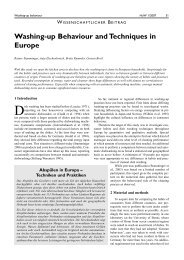Development of a novel mechatronic system for mechanical weed ...
Development of a novel mechatronic system for mechanical weed ...
Development of a novel mechatronic system for mechanical weed ...
You also want an ePaper? Increase the reach of your titles
YUMPU automatically turns print PDFs into web optimized ePapers that Google loves.
Materials and methods<br />
34<br />
� Since detection is based on RGB components, it is less affected by<br />
target position and vibration.<br />
Several sensors were tested, and the CZ – H35S optical sensor head and the<br />
CZ – V21P digital fibre optic amplifier from Keyence Company have been<br />
chosen as most appropriate according to the requirements. The CZ – V21P<br />
digital fibre optic amplifier supports three different detection modes based on<br />
the combination <strong>of</strong> colour component detection and light intensity. The control<br />
interface built in to the amplifier allows the user to choose the optimal detection<br />
mode and to set up a matching rate corresponding between the calibrated<br />
target colour, as a reference, and the target colour currently being detected.<br />
The amplifier consists <strong>of</strong> four digital physical channels which can be separately<br />
calibrated with ad-hock autocalibration in few steps.<br />
Depending on the intensity and position <strong>of</strong> the illumination, some parts <strong>of</strong> the<br />
target objects can appear white as a consequence <strong>of</strong> lustre. The CZ-H35S<br />
sensor head incorporates a polarizing filter which cancels the reflection from the<br />
glossy section and only recognises targets by their colour components. Thus<br />
the CZ-H35S sensor head maintains accurate detection despite changing target<br />
conditions.<br />
Detecting range <strong>of</strong> the CZ-H35S sensor head is between 28 mm and 52 mm,<br />
with a spot diameter <strong>of</strong> 4.5 mm. The response time <strong>of</strong> the amplifier depending<br />
on the chosen detection mode lies between 200 µs and 8 ms. The sensor head<br />
and amplifier are illustrated in Figure 4.1.





